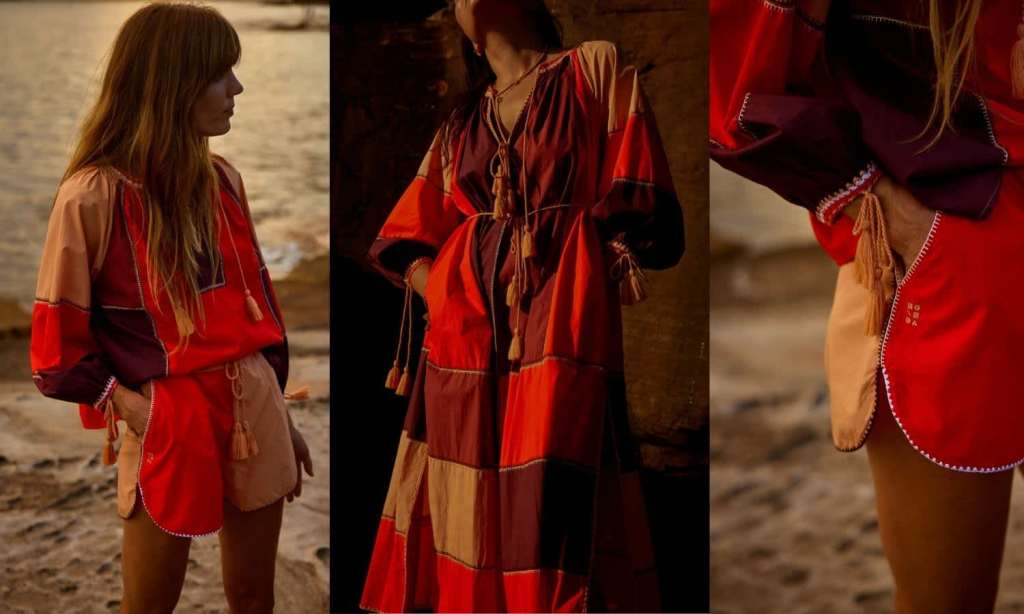The fashion industry is responsible for a whopping 10% of annual global carbon emissions. Fast fashion misuses precious resources such as water, agricultural land, fossil fuels, energy and fauna to produce hundreds of thousands of the same garment. Much of this is either worn once and then discarded or isn’t even sold out at all, ending in landfills or being incinerated.
The good news is that ethical and sustainable fashion is gaining momentum, and consumers are increasingly conscious of the impact their fashion buying habits have on the environment.
“Many people want to make more ethical choices but aren’t sure how to go about it or decide it just seems too expensive,” says Katia Kelso, co-founder and chief operating officer of sustainable fashion brand Ilio Nema. “Fair trade, certified organic, artisan, sustainable, slow fashion… these are all terms conscious fashion brands use, but what do they mean?”
To add to the confusion, Kelos continues, many mainstream brands who had previously been celebrating for launching sustainable ranges have since been accused of ‘greenwashing’. In other words, being deceptive about their supply chain processes in their marketing.
View this post on Instagram
It’s no wonder consumers are left feeling overwhelmed. So, to help you understand a little bit more about what you can do to make a difference and how you can work towards making your wardrobe more sustainable and ethical, Kelso has shared four easy behaviours you can adopt today. And sure, some are obvious, but we’re listing them anyway so they serve as a reminder.
Opt for Quality Over Quantity
“Instead of impulse buying cheap fast fashion, take the time to ensure you really want something before purchasing it,” Kelso says. She also suggests investing in higher quality pieces that are made to last beyond this season’s trend.
“One really well-made, classic shirt that you love and will wear for years is so much better for your wardrobe and the planet than five cheap ones that will likely fall apart or end up misshapen after a few washes,” she explains.
Shop Second-Hand
If you’re someone who loves wearing something new, Kelso suggests you buy second-hand.
“It’s the most sustainable way to enjoy fashion,” she says.
“The circular economy is becoming more mainstream, so it’s now easier than ever to shop for vintage or second hand pieces. Your local charity shop, markets and online marketplaces such as eBay and Facebook Marketplace can be treasure troves for vintage, classic denim and unique pieces. For designer pieces, Kelso suggests checking out The Real Real or Vestiaire Collective.”
And it goes both ways, too — if you’re clearing out your wardrobe, consider selling or donating your most well-kept items so they can have a second chance, and recycle anything a little worn, stained or faded to a textile recycling initiative.
Choose Clothes With Natural Fibres Over Synthetics
Next is to opt for national fibres over synthetics. Natural fibres such as bamboo, organic cotton and linen are much kinder to the environment than synthetic fibres, which are made from petrochemicals, not only in how they’re produced but in the way they break down, explains Kelso.
“While natural fibres are biodegradable, synthetic fibres are essentially plastic so they take hundreds of years to break down, and every time you wash them they shed microplastics into the water supply,” she says.
With her own clothing at Ilio Kelso, she uses cotton because it’s breathable, comfortable and easy to care for. Not all cotton is sustainable, though, she warns.
“Conventional cotton is typically sourced from some of the poorest and most exploited of the world’s people, then using a slew of pesticides and being heavily processed,” she explains.
Instead, Kelso says to opt for organic cotton pieces that are certified by the GOTS or Better Cotton Initiative — it’ll be on the label or on the company’s site, so you know it has been grown sustainably and ethically.
Opt for Brands That Use Deadstock or Remnant Fabric
Next is to look at buying from brands that use fabrics that are already available, but won’t be used, often from other designer’s collections. Called ‘deadstock’, these fabrics are thought to cost the fashion industry over USD $500 billion every year.
“That’s a lot of fabric destined to landfill,” says Kelso. “An increasing number of brands are also choosing to use what is already available, reducing waste rather than creating more.”
Read more stories from The Latch and subscribe to our email newsletter.







